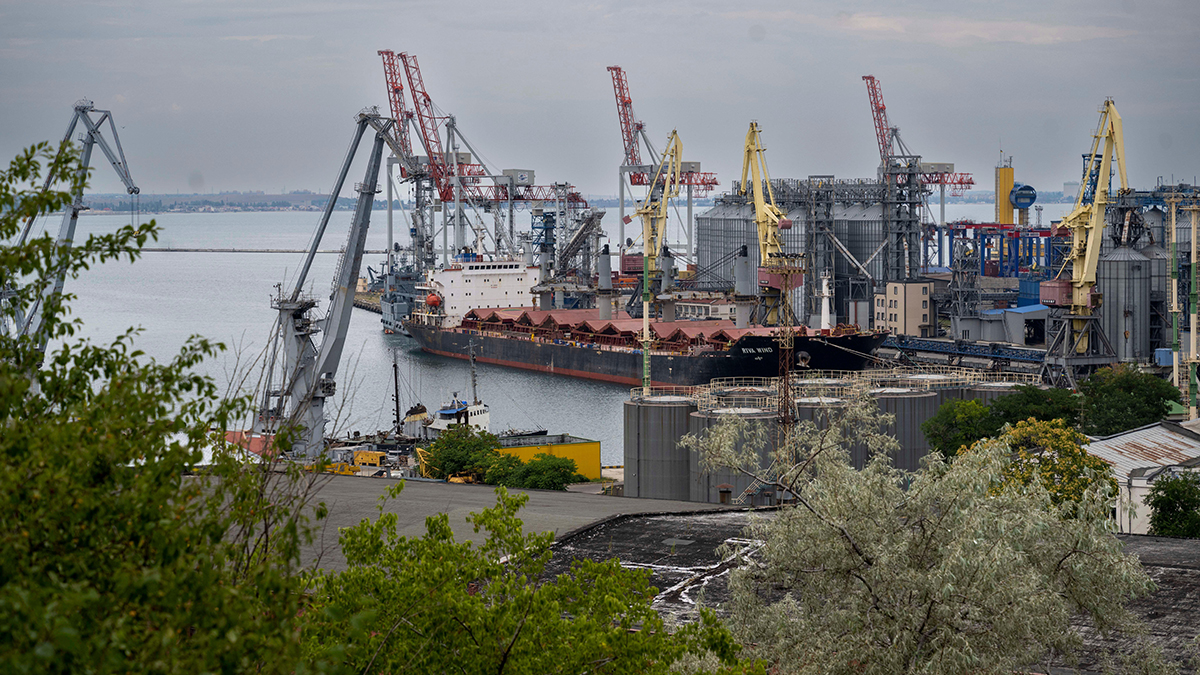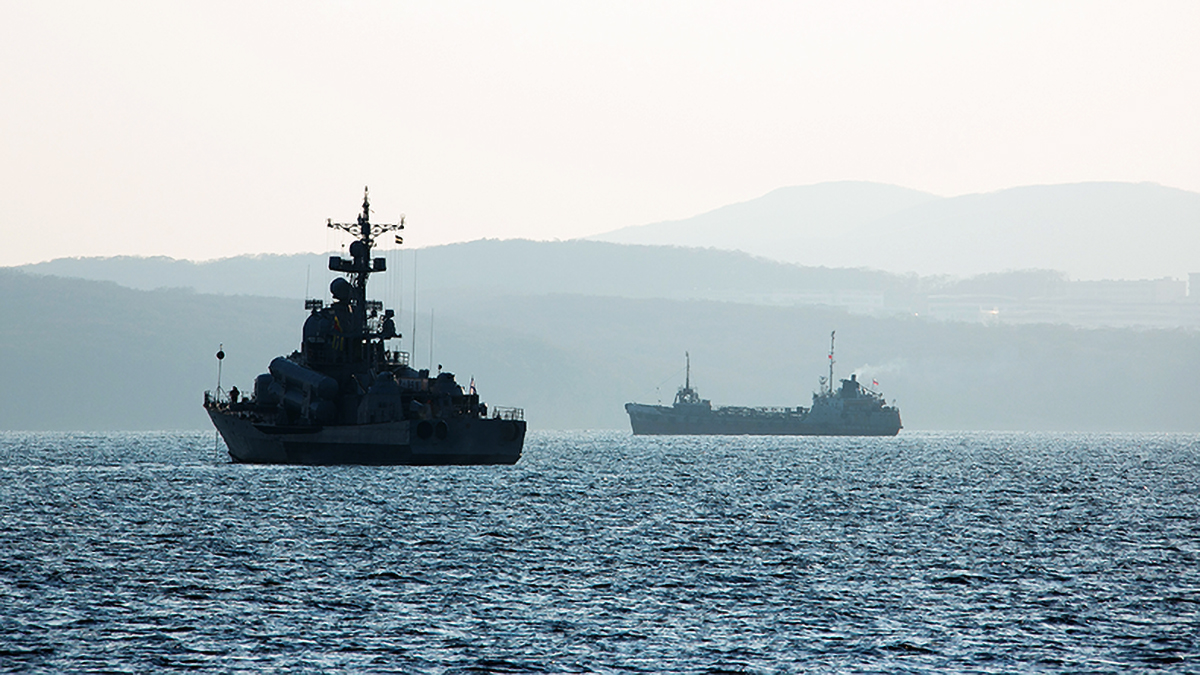Insurers wanted for Ukraine defence investment
‘The Russian invasion uncovered a lack of ammunition and basic defence equipment globally,' Ukrainian lawmaker says
Ukraine seeks a war risk insurance mechanism for its defence technological and industrial base, member of parliament, Halyna Yanchenko, tells Insurance Day
A Ukrainian lawmaker will meet members of the US Congress next week to convince them of the need for an insurance agency to derisk investments in the war-torn country’s defence technological and industrial base (DTIB).
Halyna Yanchenko’s goal is to encourage US manufacturers of military equipment to establish production plants, ideally through joint ventures, directly in Ukraine. She has identified three tools to enable this: war risk insurance; lend-lease of equipment; and off-take contracts.
A member of the Ukrainian parliament, the Verkhovna Rada, Yanchenko is also secretary of the National Investment Council of Ukraine and chair of the temporary Special Commission of the Verkhovna Rada on protecting investor rights.
“Most decisions that have been made around Russia’s invasion of Ukraine became global and so it’s only a matter of who will take the first step to unfreeze these assets. It’s the same with war risk insurance. When we were starting discussions about that, not many people thought it would be possible, but it soon became acceptable to a club of responsible decision-makers”
Halyna Yanchenko
Ukraine
In an interview with Insurance Day, Yanchenko says her schedule in Washington DC will include a closed meeting of potential stakeholders hosted by The Wilson Center, a US think tank that works with Congress. She adds re/insurers interested in attending the event should contact The Wilson Center.
“I want to come back with an understanding of what can be the agency to implement this initiative. And I want to come back with an understanding who can be in a coalition of stakeholders, from governments and the private sector, to advocate for war risk insurance for defence companies,” she says.
Yanchenko will not reveal which members of Congress she will be meeting but says they include Brian Fitzpatrick, who is chair of the national intelligence sub-committee in the current 118th Congress.
Existing models
The proposed war insurance agency for Ukraine’s DTIB could be modelled on similar approaches to war risk insurance for investments in civilian sectors, Yanchenko says. These approaches were taken by the US International Development Finance Corporation (DFC) and the World Bank’s Multilateral Investment Guarantee Agency (Miga).
Yanchenko says, to date, DFC and Miga have issued war risk insurance guarantees in Ukraine for about $380m and $142m respectively since Russia’s invasion.
 Superhumans Center, Vynnyky, Ukraine
Raj Valley/Alamy Stock Photo
Superhumans Center, Vynnyky, Ukraine
Raj Valley/Alamy Stock Photo
An example of their projects is the DFC’s $25m war risk insurance for the Superhumans Center, which provides free services for prosthetics, rehabilitation, reconstructive surgery and psychological support to those injured in the war in Ukraine. The first such facility opened near Lviv in April 2023 and there are plans to expand the service to other regions of Ukraine.
In June last year, DFC and Miga announced they had formed a joint consultative group on political risk insurance, including war risk insurance, for Ukraine. This was aimed, they said, at promoting private sector investments there to aid its economic recovery and eventual reconstruction. DFC and Miga’s collaboration could be extended, Yanchenko says, to include insurance for Ukraine’s DTIB, or a new separate agency could be created specifically for this.
“In 2022, we successfully convinced American agencies to insure civic investments, but cooperation with the military industry is a taboo for international finance organisations,” Yanchenko explains.
“That necessitates new arguments, alliances with stakeholders in the government and private sector and, most importantly, creative solutions for war risk insurance for defence equipment.”
In December, the US and Ukraine signed a declaration on joint weapons manufacturing, including the production of hybrid air defence systems within the FrankenSAM programme, which combines advanced Western technology and Soviet-era weapons stockpiles, with possible technology transfer for Ukraine.
“Despite the deal looking favourable,” Yanchenko says, “some conflict risk mitigation protection is needed to stimulate such US investment.”
Such coverage could be formulated, she stresses, along the lines of the successful non-DTIB investment insurance developed several years ago by DFC and the insurance programmes formulated by Miga. “Both programmes could be a model for Ukraine’s DTIB sector,” she adds.
Other tools
A second tool alongside war risk insurance could be a new lend-lease DTIB equipment-targeted programme, Yanchenko says.
The US-Ukraine Democracy Defense Lend-Lease Act, passed on April 28, 2022, could have helped in this regard but it was allowed to expire on September 30, 2023.
“The White House prefers other support programmes for Ukraine,” Yanchenko says, such as the Presidential Drawdown Authority, the International Monetary Fund’s Extended Fund Facility and the Ukraine Security Assistance Initiative.
Yanchenko urges a revisit of the lend-lease arrangements to support commercial leasing of the equipment needed for weapons and ammunition production. This could be crucial, she says, to meeting the capital expenditures needed for joint ventures between Ukrainian and US weapons manufacturers to ramp up production quickly and in high volumes.
“The lend-lease mechanism proved successful during World War II. The difference now is that leasing can be provided on a paid basis for the private sector, avoiding the additional sovereign-country-risk liability burden for Ukraine,” she says.
A third tool could be long-term off-take contracts from Ukraine and its allied states. These will only become practical, however, if military technology conflict insurance can be offered for investments, Yanchenko says.
“The intense local combat and probable future instability both in the region and globally mean demand for DTIB products will likely remain high for decades,” she says, adding joint venture production could be a form of economic assistance that would reduce the need for direct US support.
Russian missile and drone attacks since Russia’s president, Vladimir Putin, ordered a full-scale invasion of Ukraine in February 2022, have led to a revival of Ukraine’s DTIB, which in 2023 produced weapons and equipment worth $3bn, adding 1.5% to the country’s GDP growth.
“Over the past year, the largest state-owned industry holding, Ukrainian Defence Industry JSC, boosted its production 92%, but it now lags behind local, privately owned defence enterprises, especially with respect to R&D [research and development],” Yanchenko says. “For example, nine out of 10 long-range drone manufacturers are private companies,” she adds.
Front-line R&D
Ukraine “greatly outperforms” Russia in the manufacture of drones, she stresses, with over 100 different models developed and customised for military use by more than 200 Ukrainian manufacturers. Ukraine’s Sea Baby maritime drone, largely produced through private R&D, has already destroyed one-third of the Russian fleet in the Black Sea, forcing Russia's remaining vessels out of its naval base in Sevastopol.
Yanchenko adds the need to increase weapons production has become increasingly urgent, given the ramp up in Russia’s military production with additional budget allocations and the mobilisation of “hundreds of thousands” of new soldiers. “These moves threaten not only Ukraine,” she continues, “but also the EU and Nato, and hence the US.”
Ukraine’s president, Volodymyr Zelenskyy, has set an annual target of one million drones produced domestically, which Yanchenko says is not achievable without larger foreign capital investment.
Ukraine has the unenviable status, she adds, as the global centre for the testing and use of modern weaponry. Front-line data collection in real time and free of charge has replaced the need for weapons manufacturers to spend years and tens of billions of dollars on R&D.
The Ukrainian army comprises not only military personnel, but also civilian volunteers from all sectors of the country’s economy.
Yanchenko continues: “In March, I visited the front line twice, in the east and in the south of Ukraine, and just 200 metres away from Russian positions. I saw how our defenders use creative ways to perform a military task with the equipment and weapons they have. We’re talking about thousands of R&D activities on the very front line because of this unique combination of military and civilian expertise our army has.
“This should be very attractive for foreign defence companies in Ukraine because they will have access to this expertise and experience. And with global media attention focused on Ukraine, our army is the best advertising they can get for their equipment.”
Global problem
Despite the obvious benefits to foreign companies from investing in Ukraine, not to mention the country’s lone fight against Putin’s forces, Yanchenko highlights the argument against Ukraine’s allies using taxpayer’s money to fund its defence.
Of the $330bn in Russian central bank assets frozen by the EU and the G7 following Moscow’s invasion of Ukraine, Yanchenko says there is growing acceptance it is “nonsense” not to direct this money towards Ukraine.
“You break it, you pay for it,” she says. “It’s obvious who is messing with Ukraine, who is causing huge damage, but currently it’s Western countries and other civilised countries that are covering this damage and providing assistance.”
The Ukrainian government is compiling a “register of damages”, she adds, and hopes these frozen Russian assets will soon be unlocked and used for Ukraine’s reconstruction.
“Most decisions that have been made around Russia’s invasion of Ukraine became global and so it’s only a matter of who will take the first step to unfreeze these assets. It’s the same with war risk insurance. When we were starting discussions about that, not many people thought it would be possible, but it soon became acceptable to a club of responsible decision-makers.”
Yanchenko’s visit to the US next week is to explore a “window of opportunity” to discuss the war risk insurance defence companies are asking for.
“Derisking Ukraine’s DTIB is an issue of our physical survival, but the Russian invasion uncovered a lack of ammunition and basic defence equipment globally, which is why defence companies are saying this is a ‘golden era’ for them,” Yanchenko says.
“But for at least the past dozen years, international financial organisations have not worked with defence companies – they have not provided loans, insurance or other financial instruments. Times have changed, however, and they need to change with them.”



